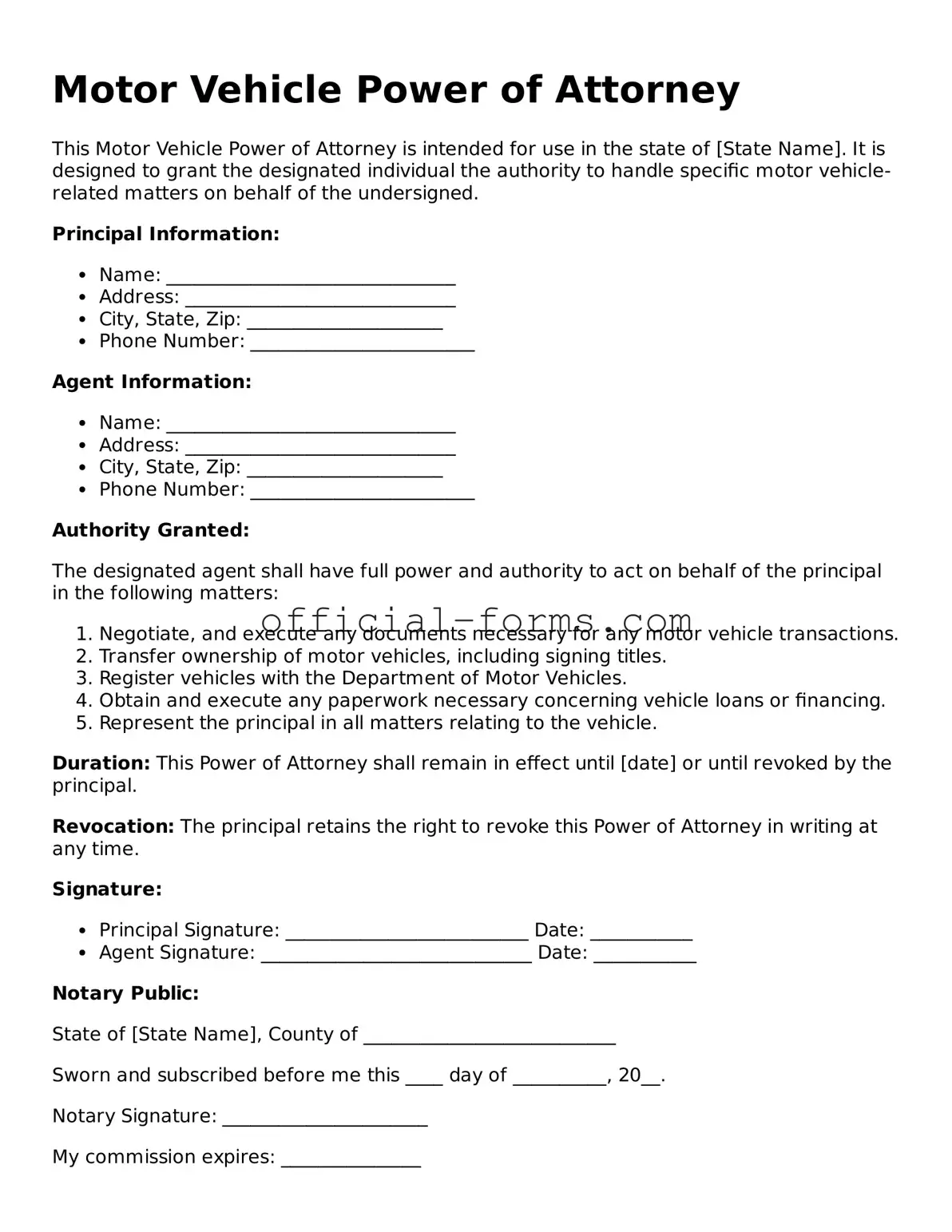Filling out the Motor Vehicle Power of Attorney form can be a straightforward process, but mistakes can lead to delays or complications. One common error is failing to provide complete information. When individuals leave out crucial details, such as the vehicle identification number (VIN) or the correct names of the parties involved, it can create confusion and hinder the processing of the form.
Another frequent mistake is not signing the form. A signature is essential for validating the document. Without it, the Power of Attorney is not legally binding. It's important to ensure that all necessary parties have signed the form before submission.
People often overlook the date on the form. An incorrect or missing date can raise questions about the validity of the document. Always double-check that the date is accurate and clearly written to avoid potential issues.
Some individuals mistakenly assume that a notary is not required. Depending on the state, notarization may be necessary for the Power of Attorney to be considered valid. It is advisable to check local requirements to ensure compliance.
In addition, failing to specify the powers granted can lead to misunderstandings. If the form does not clearly outline what actions the attorney-in-fact is authorized to take, it can cause disputes later. Clarity is key in preventing confusion.
Another common oversight is neglecting to include any limitations on the authority granted. If there are specific actions that should not be permitted, these should be explicitly stated. This helps protect the interests of the principal.
Some individuals may also forget to provide a clear revocation clause. If the principal wishes to revoke the Power of Attorney in the future, having a clear statement of revocation included in the document can simplify the process.
Finally, individuals sometimes fail to keep copies of the completed form. Retaining a copy ensures that all parties have access to the same information and can help resolve any disputes that may arise. Keeping a well-organized record is essential for smooth transactions.
